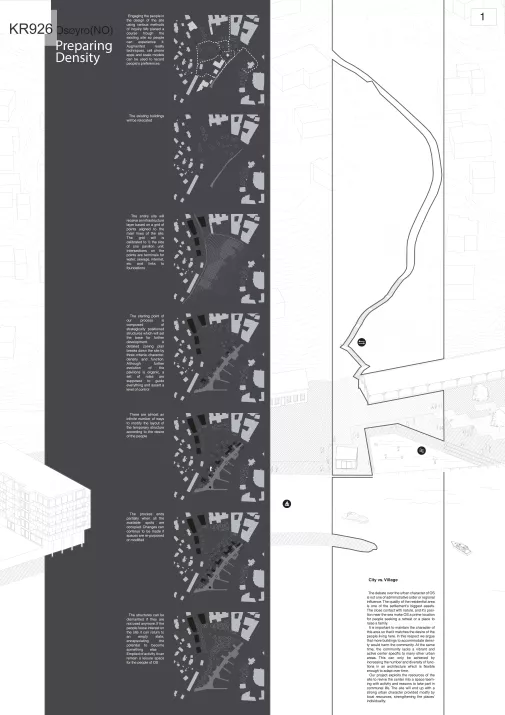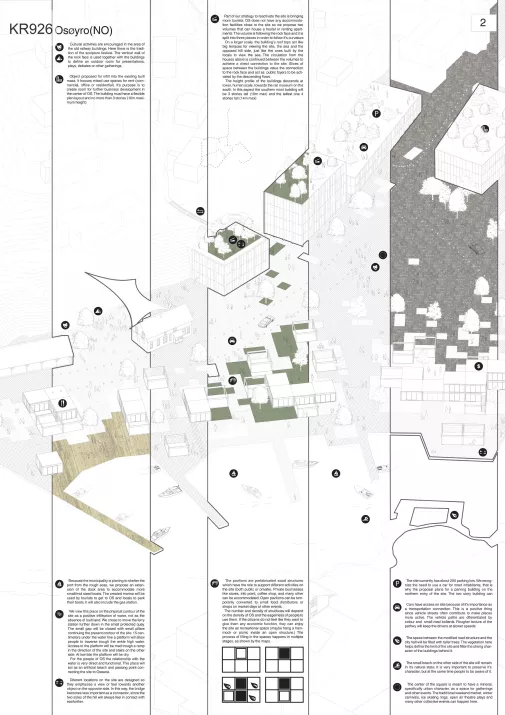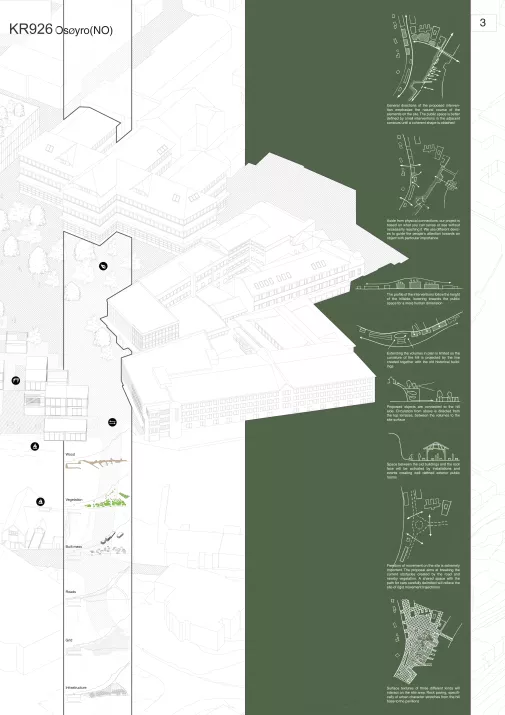Project:
Preparing Density
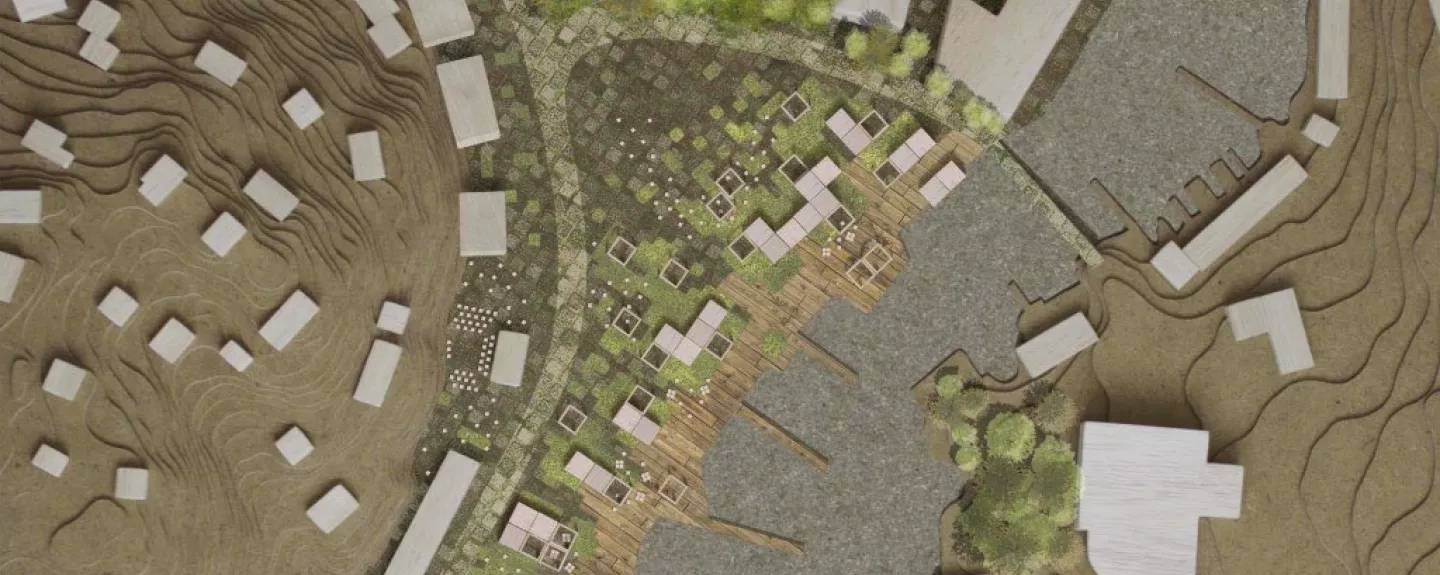
About
-
City vs. Village
The debate over the urban character of OS is not one of administrative order or regional influence. The quality of the residential area is one of the settlement's biggest assets.
The close contact with nature, and it's position near the sea make OS a prime location for people seeking a retreat or a place to raise a family.
It is important to maintain the character of this area so that it matches the desire of the people living here. In this respect we argue that more buildings to accommodate density would harm the community. At the same time, the community lacks a vibrant and active centre specific to many other urban areas. This can only be achieved by increasing the number and diversity of functions in an architecture which is flexible enough to adapt over time.
Our project exploits the resources of the site to revive the center into a space teeming with activity and reasons to take part in communal life. The site will end up with a strong urban character provided mostly by local resources, strengthening the places' individuality.
Cultural activities are encouraged in the area of the old railway buildings. Here there is the tradition of the sculpture festival. The vertical wall of the rock face is used together with the buildings to define an outdoor room for presentations, plays, debates or other gatherings.
Object proposed for infill into the existing built mass. It houses mixed use spaces for rent (commercial, office or residential). It's purpose is to create room for further business development in the center of OS. The building must have a flexible plan layout and no more than 3 stories (10m maximum height).
Part of our strategy to reactivate the site is bringing more tourists. OS does not have any accommodation facilities close to the site so we propose two volumes that can house a hostel or renting apartments. The volume is following the rock face and it is split into three pieces in order to follow it's curvature.
On a larger scale, the building's root tops act like big terraces for viewing the site, the sea and the opposed hill side, just like the ones built by the locals to view the sea. The circulation from the houses above is continued between the volumes to achieve a direct connection to the site. Slices of space between the buildings value the connection to the rock face and act as public foyers to be activated by the descending flows.
The height profile of the buildings descends at lower, human scale, towards the rail museum on the south. In this aspect the southern most building will be 3 stories tall (10m max) and the tallest one 4 stories tall (14m max).
-
This project was much discussed in the jury as it challenges a conventional type of development and the planned densification in the municipality of Os. It argues that a traditional densification would harm the Os community and instead it proposes a strategy of densifying social, cultural and economic interactions. They do this by introducing a pavilion structure on site to promote temporary activity in the centre of Osøyro, ensuring large parts of Os city centre to become dedicated to the public, and not to private market forces. As a result, a generous urban space with “unrestricted mobilily” is created. The project promotes a system of empowerment where the inhabitants can participate directly in developing the town centre.
The jury appreciated that the project promotes a political act and at the same time creates an unique identity to the place that could become an attraction in itself. The vast open socio-cultural space is a strong urban gesture, although somehow a “tabula rasa” approach as it does not consider existing buildings or public space. The jury finds the idea of placing new buildings aside of the site –west of the main road – an interesting and feasible strategy that could relieve the waterfront from some of the privat housing development and the challenges linked to the demand for private outdoor spaces etc. The jury also appreciated the idea that external main roads change character as soon as they meet the centre transforms into a large shared space. The jury believes that this could redefine and diminish some of the traffic barriers in the centre and think this is an alternative that the city should consider. The pavilions suggested are less interesting and the jury is critical to the less original and operative participatory strategies in the scheme.
-
Team representative: Bogdan Demetrescu (RO) – architect
Contributors: Denis Poloca (RO), Dragoș Mircea Nistor (RO), Alexandra Medana Oprea (RO), Bogdan Tudor(RO), Oana Simionescu (RO), Alexandru Voica (RO) – architectsUnirii Square 5, 300085, Timișoara – România
+40 722 540 448 – dproiect@gmail.com
B. Tudor, D. Poloca, A. Voica, A. Medana Oprea, O. Simionescu, D. M. Nistor, B. Demetrescu
Team interview
1. How did you form the team for the competition?
This team includes students and teachers of the Timisoara Faculty of Architecture and City Planning. The initiative belongs to the teachers of 8th semester design studio to challenge the students to perform under exceptional situations in a professional architecture competition.
2. How do you define the main issue of your project, and how did you answer on this session main topic: Adaptability through Self-Organization, Sharing and/or Project (Process)?
The project's local issue is the high increase in density that the area is expecting. Our project stands out as one of the few proposals that chose to keep the town centre dedicated to the community with fewer built structures in an attempt to increase the number of activities, interactions and events but allow for open spaces with a public character. The natural setting offered a lot of opportunities to create spatial events, which can enhance the experience of the town centre. Capitalizing on these resources helped us reestablish the relation between the community and the topological limits. The process we put forward relies on a few fixed interventions in the primary stages, rising density and the amenities offered by the site and is continued by a micro level strategy focused on small local entrepreneurs. People can rent small space for businesses and expand with the growth of the community and their enterprise. This results in an inclusive bottom-up process, which follows the development expected by the society.
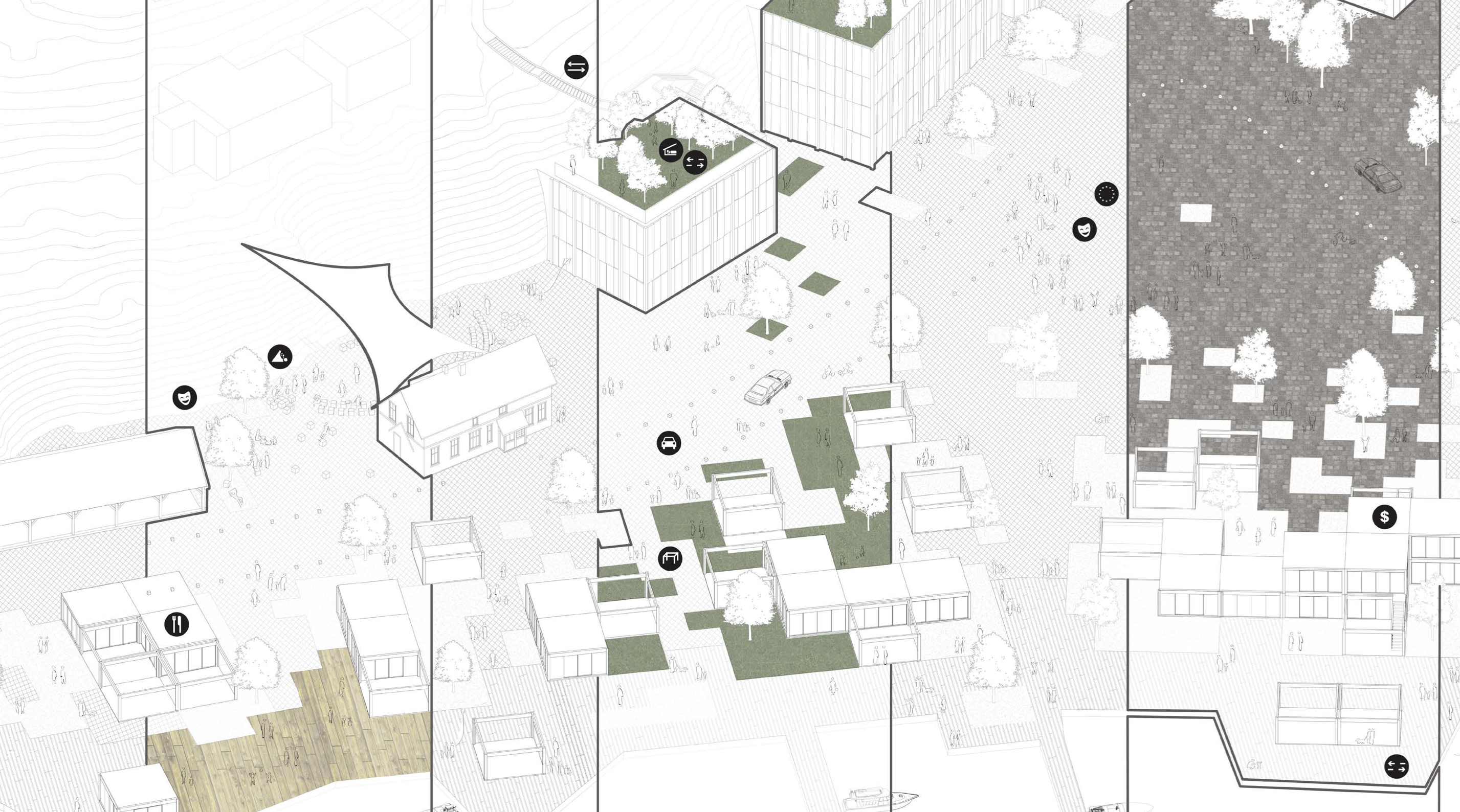
3. How did this issue and the questions raised by the site mutation meet?
For the site in Os, we found the brief to be very compatible with the theoretical issues raised by Europan. The particularities of the site and the demographic context added more complexity layers to the process. Managing the solution from all these perspectives just made for a more complete design process and appropriate outcome.
4. Have you treated this issue previously? What were the reference projects that inspired yours?
In our previous projects we have engaged in urban planning and community development. Europan was a chance to continue our research and become more pragmatic. The particularities of the site and our desire to be as specific to the site as possible meant there is no particular project that influenced our work. We all try to keep up-to-date though with the trends in important concepts like managing density, reviving community centres and urban design.
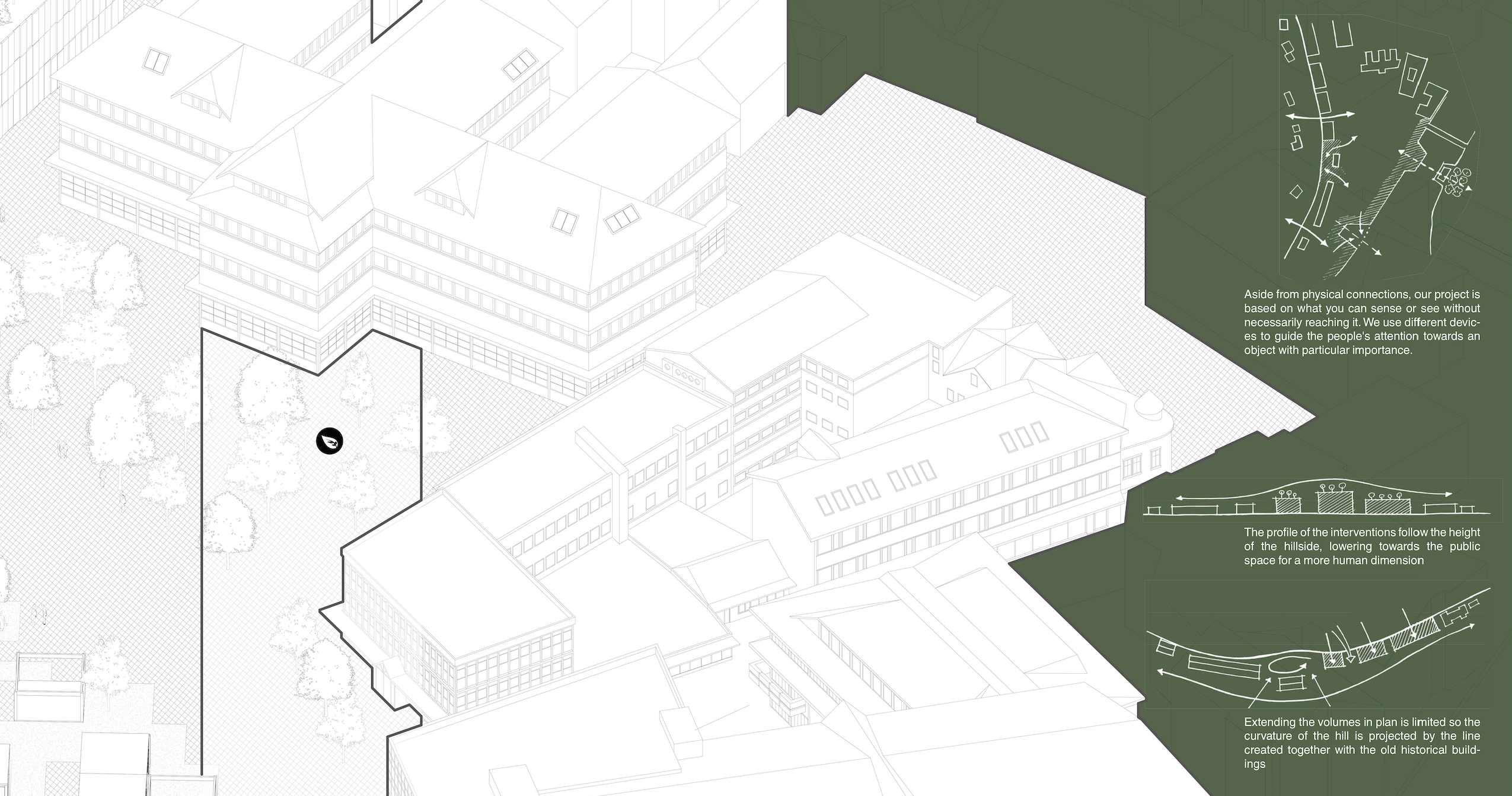
5. Today –at the era of economic crisis and sustainability– the urban-architectural project should reconsider its production method in time; how did you integrate this issue in your project?
It is important to understand the economic implications of our proposals but our strategy is not one that would bring the most financial benefit for the community. We aim at providing a space that can expand and contract in coherence with the needs of the people. In response to this, fixed structures generating revenue and activity are accompanied by flexible ones assuring a constant level of activity on the site.
6. Is it the first time you have been awarded a prize at Europan? How could this help you in your professional career?
For the students, Europan 13 was not the first competition they took part in, but it was the first Europan edition and the most prestigious. The tutors had the experience of participating to previous editions with notable results. This experience has motivated us to have more faith in our own forces and participate in other competitions in the future. We are for sure going to participate in the future editions of the contest. Having a Europan title will surely help make more companies open towards internships, and will allow us having a better start in our careers.
Related projects
-
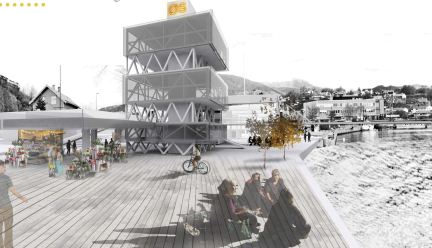
Osurbia
The project advocates a redefinition of the concept of "suburbia" in the context of a new scenario…
-
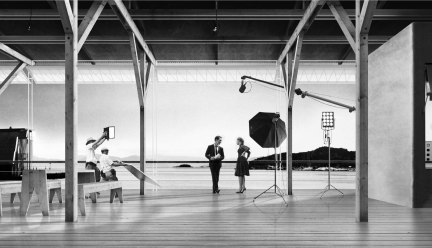
Limelight
The importance of the multicore planning policy lies in generating a mutual relationship of…
-

Preparing Density
The site will end up with a strong urban character provided mostly by local resources,…
